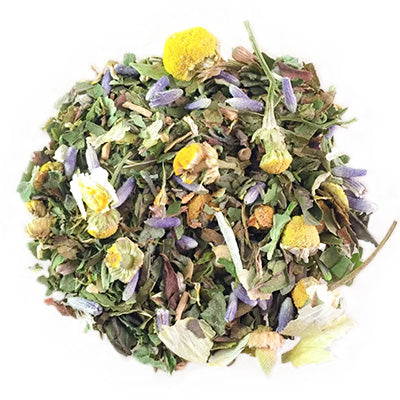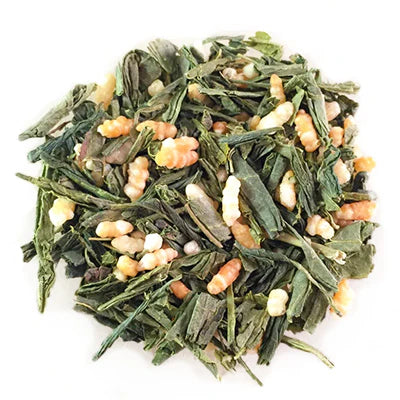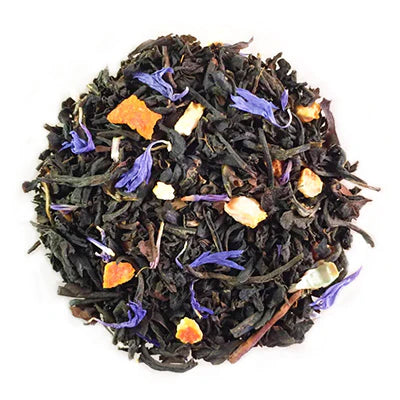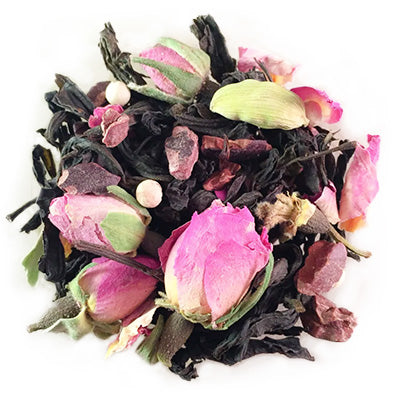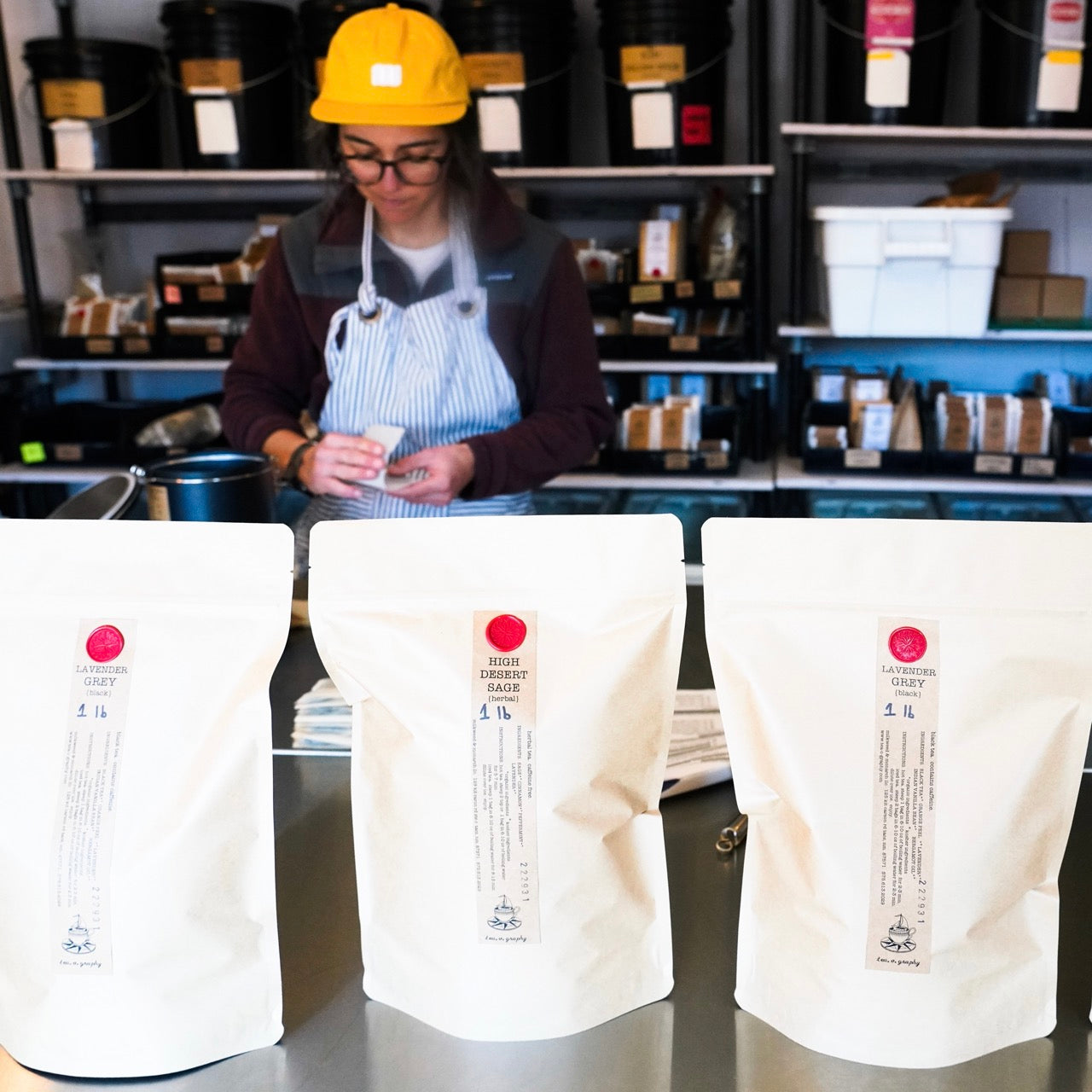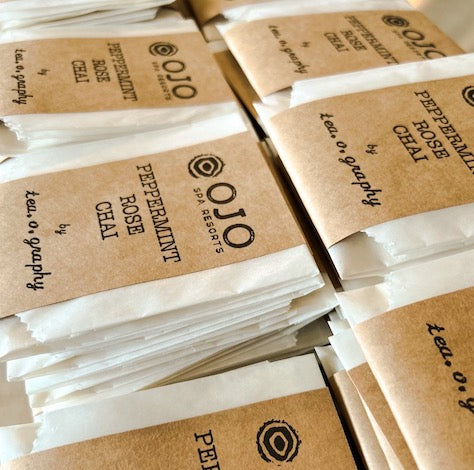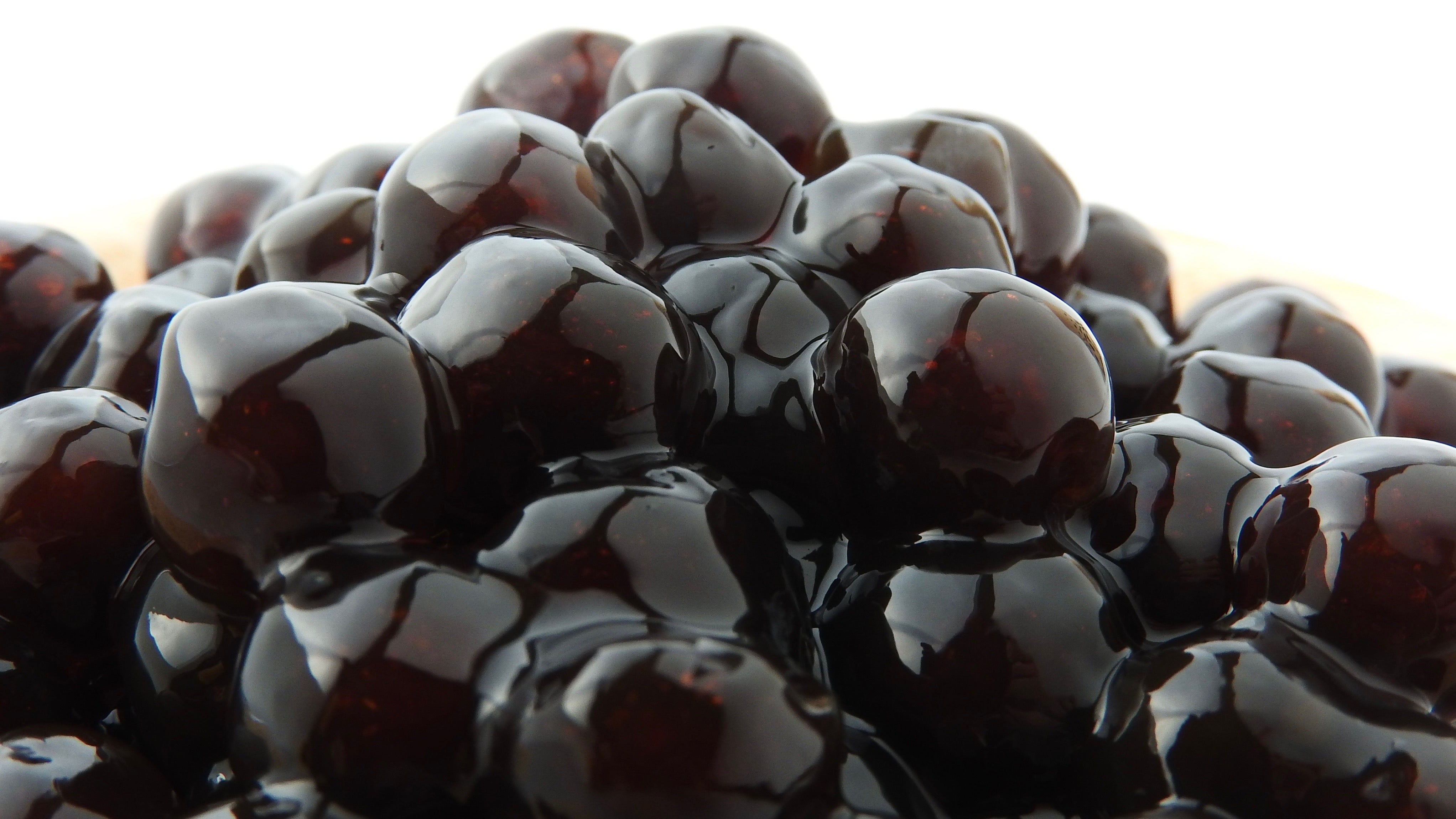We have a tendency here in the West to refer to all hot steeped beverages as “tea.” This is actually quite misleading. In the world of infusing plants as a hot beverage—all teas are infusions, but not all infusions are teas. Huh? Read on! We won’t leave you steeping in curiosity…
WHAT’S THE DIFFERENCE BETWEEN TEA, TISANES, AND HERBAL TEAS?
 While we like to use “tea” as a ubiquitous term indicating a hot (or iced) drink made from infusing plants or plant components, “tea” is not quite that universal.
While we like to use “tea” as a ubiquitous term indicating a hot (or iced) drink made from infusing plants or plant components, “tea” is not quite that universal.
Traditional teas are derived strictly from the tea plant (Camellia sinensis), which naturally contains caffeine. Think white, green, oolong, black, and even pu-erh teas!
Whereas, tisanes are infusions that do not contain any part of the tea plant. Rather they are infusions and decoctions made of leaves, roots, berries, and seeds of other plants.
Tisane is synonymous with the more commonly used, herbal tea, and tends to imply that it is caffeine free. This makes some tisanes a great alternative for tea drinkers avoiding caffeine, or for people who want steeped beverages later on in the day or before bed.
However, while most tisanes are caffeine free, there are a handful that do contain caffeine. Think yerba mate, guayusa, yaupon, to name a few.
So! …
-
TEA = Infusion of dried leaves from the Camelia sinensis (tea) plant. Caffeinated.
-
TISANE = Fancy (and more precise) way to refer to infusion of other leaves, roots, berries, and seeds that are NOT from the tea plant. Mostly caffeine free, although some do contain caffeine.
-
HERBAL = Everyday vernacular, meaning tisane ;)
HISTORY OF TISANES
 Tisanes have been used as restorative elixirs, sacred drinks, and celebratory refreshments throughout history and across the world! The word “tisane” is French, derived from the ancient Greek “ptisane,” which originally referred to a brewed barley beverage. As language evolved over time, it came to mean any herbal brew as calling tisanes “herbal teas” was easier to market to English speakers.
Tisanes have been used as restorative elixirs, sacred drinks, and celebratory refreshments throughout history and across the world! The word “tisane” is French, derived from the ancient Greek “ptisane,” which originally referred to a brewed barley beverage. As language evolved over time, it came to mean any herbal brew as calling tisanes “herbal teas” was easier to market to English speakers.
Herbal teas themselves go back thousands of years, with written records dating back 5,000 years to the Sumerians, who documented the healing properties of plants, such as laurel (bay leaves), caraway, and thyme. In China there is evidence of tisanes used for medicinal purposes even further back to over 8,000 years ago. One of the earliest recorded tisane recipes is a familiar one, even though it hails from ancient Egypt. The Ebers Papyrus calls for chamomile leaves to be steeped in hot water, an infusion meant to both relax the mind and to ritually honor the gods. Wherever there were plants, our ancestors saw an opportunity to use them to create herbal teas.
Due to our fascination with plants, roots, and herbs, every culture has crafted their own history and ritual around tisanes. For instance, the Khoi tribe in South Africa created tisanes from rooibos (a red mountain bush), with its sweet tasting and bright crimson colored leaves. Today, rooibos is one of the most popular tisanes in the world! Another great example is mint tisane, which originated in Morocco. It’s popular as a caffeine free drink to enjoy in the evenings, and it has the added bonus of aiding in digestion. Across North America, different indigenous tribes have long used herbal brews, from yaupon to dandelion.
This rich history reveals the widespread nature of tisanes and that cultures have revered the use of herbal teas worldwide through ritual, medicine, and culinary traditions. From ancient times to modern day, tisanes hold a special place in the heart and cups of humanity, or let’s say humani-tea.
TISANE INGREDIENTS
 There are many types of tisanes, and they are typically categorized by what part of the plant is used.
There are many types of tisanes, and they are typically categorized by what part of the plant is used.
-
Leaf Tisane: lemon balm, mint, lemongrass
-
Flower Tisanes: rose, chamomile, hibiscus, lavender
-
Bark Tisanes: cinnamon, slippery elm, cherry bark
-
Root Tisanes: ginger, echinacea, chicory
-
Fruit/Berry Tisane: peach, apple, raspberries, elderberries
-
Seed/Spice Tisanes: cardamom, fennel, anise
OUR RECOMMENDATIONS
 Tisanes have an array of health benefits as well, from the antioxidant rich hibiscus to the calming effects of chamomile! Try any of our herbal selections for a caffeine free tisane! Here is a selection of some of our favorites….
Tisanes have an array of health benefits as well, from the antioxidant rich hibiscus to the calming effects of chamomile! Try any of our herbal selections for a caffeine free tisane! Here is a selection of some of our favorites….
-
Cafe sans Cafe - our herbal version is a coffee like alternative.
-
chicory root + dandelion root + carob + vanilla bean
-
The Cats Pajamas - the perfect night cap or cup before an afternoon catnap!
-
peppermint + catnip + chamomile + lavender + hops flowers + valerian root
-
High Desert Sage - Taos in a teacup!
-
sage + peppermint + cinnamon + lavender
-
Honey Lavender - a soothing cup anytime of day!
-
honeybush (sister plant to rooibos) + lavender + fennel + vanilla bean
-
Peppermint Rose Chai - an unexpected twist, creating a caffeine free chai!
-
peppermint + roses + cinnamon + cardamom + ginger root + white peppercorn + anise seed + vanilla bean + cloves


